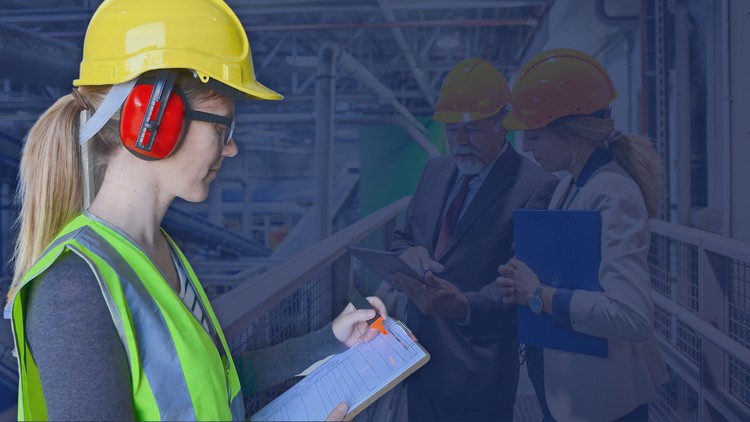Energy Fundamentals for Energy Auditors
- Description
- Curriculum
- FAQ
- Reviews
Energy Auditor Course: Energy Fundamentals
This Energy Auditor Course aims to improve your way of thinking rather than a deep dive into energy fundamentals and technology. Our goal is to help you see more savings opportunities for your clients without being restricted to costly equipment upgrades.
Anyone implementing an ISO 50001 Energy Management System with the aim of achieving large improvements in energy productivity needs a good understanding of the fundamentals of energy.
Empower yourself with the knowledge that’s crucial for success in energy auditing.
-
Gain a solid understanding of the first law of thermodynamics for precise efficiency calculations.
-
Master the characteristics of water and air, essential for every energy auditor.
-
Learn the four mechanisms of heat transfer to pinpoint energy losses accurately.
Energy Fundamentals for Energy Auditors Description
One of the great things about energy efficiency as a career is the challenge of mastering a broad area of knowledge so that you can provide good advice. Advice that can bring in actual energy savings that help businesses grow and become more environmentally conscious.
Understanding the theory of energy fundamentals underpins a lot of this knowledge. If you don’t understand this theory, you’ll probably find it challenging to identify those large savings opportunities. Without a good grasp of energy fundamentals, you’ll be more likely to fall for dubious product suppliers using pseudo-science to promote products that supposedly deliver massive savings.
In this Energy Auditor Course, you’ll learn how to apply the first law of thermodynamics and determine the overall efficiency of a system or process. This course then covers the fundamentals of electricity and heat transfer. It looks at the properties of air and water.
Finally, the course looks at an easy-to-make mistake associated with energy calculations and how to avoid it.
Why We Developed This Energy Auditor Course
Energy auditors with a deeper understanding of energy fundamentals can figure out how to save more energy than those who don’t. They’ll be able to scrutinize potential solutions with a critical eye.
Clean energy and energy efficiency are emotionally attractive to many people. Look at the sky-high valuations of many green technology companies. This emotional attraction also has financial attraction – “look at how much money you can save!” It can mean that wishful thinking replaces science.
A new product promoted by a very enthusiastic salesperson that promises to “slash greenhouse gas emissions” may attract energy users and even energy advisors. However, this product doesn’t actually work.
If you understand energy fundamentals, you should be able to see through this and avoid paying for equipment that adds no value to a facility.
-
1IntroductionVideo lesson
Welcome to this course on energy fundamentals for energy engineers. This course introduces you to those energy and physics fundamentals that are important for energy engineers.
To get the most from the course I suggest you do the exercises during the lessons – often you’ll be asked to think about an issue and put your response into the Q&A section below.
-
2Your Best Friend – The First Law of ThermodynamicsVideo lesson
The first law of thermodynamics states that energy cannot be created or destroyed, it can only change form.
In this lesson you’ll learn how to apply this law to identify energy losses, and thus potential energy saving opportunities.
In the resources section, below, you’ll find a link to a tool for creating Sankey diagrams.
-
3Introduction to Energy CalculationsVideo lesson
A fundamental skill any energy engineer should have is the ability to be undertake calculations to determine energy use.
But what is energy? In this lesson you’ll learn a couple of fundamental energy calculations.
-
4Characteristics of WaterVideo lesson
Water is commonly used to transfer heat energy, and characteristics of water that are important to energy calculations include those characteristics that define how much heat it can transfer, and how much energy it takes to move water.
Learn about these in this lesson.
-
5Characteristics of AirVideo lesson
The properties of air are important to energy engineers when it comes to HVAC system calculations and human comfort.
Learn about them in this lesson!
In the resources section of this lesson (below) you’ll find information on psychrometrics. If you don’t know how to use the psychrometric chart please go through these resources.
-
7Electricity and Its CharacteristicsVideo lesson
In this lesson you’re advised to respect electricity, and learn how to calculate electrical power.
-
8AC PowerVideo lesson
Learn how to calculate three phase power.
In the resources section below, you can learn more about AC induction motors, and star and delta wiring.
-
9DC PowerVideo lesson
Learn about the advantage of DC power.
The resources section below links through to a short guide providing further information.
-
10Losses in Electricity Transmission and DistributionVideo lesson
Learn about the relationship between voltage, current and resistance, and losses in cables.
-
11AC Voltage and Equipment EfficiencyVideo lesson
This lesson looks at how voltage can impact on power draw and energy usage.
In the resources section you’ll find a link which shows the impact of varying voltage on three phase motors, and how high efficiency motors respond in a different way to low efficiency motors.
-
12Heat TransferVideo lesson
This lesson looks at the ways in which heat can be transferred.
Can you name the 4 different mechanisms of heat transfer? Write down what you think they are in the Q&A section below, then watch the video!
The resources section provides links to further information and calculation methods.
-
13How to Avoid the Easy-to-Make Mistake even the Smartest Auditors MakeVideo lesson
Energy efficiency calculations can be complex. And even the smartest engineers can make mistakes in the units used in calculations, for example by confusing energy with power. That is confusing kWh or MJ – the amount of energy used over a certain time period with kW or MJ/hour – that is the load, power or rate of use of energy.
You’ve be surprised how often even experienced auditors, who, in a hurry, can confuse kW and kWh, and end up with errors in their calculations.
So how do you avoid this easy-to-make mistake? What do you think? Write your answer in the Q&A section below, then watch the video to find out!

External Links May Contain Affiliate Links read more





